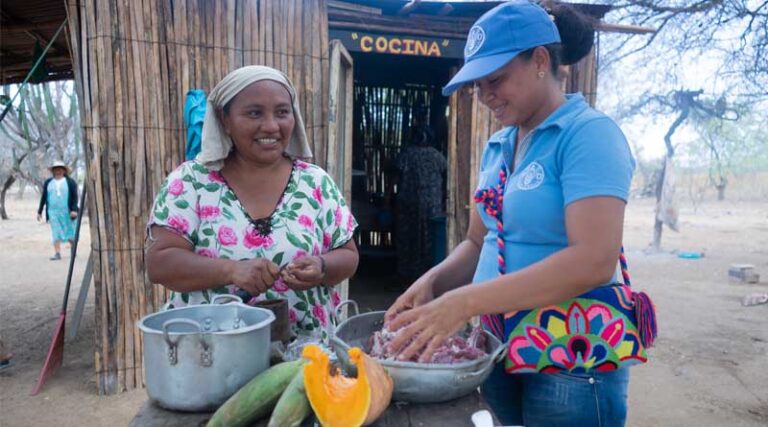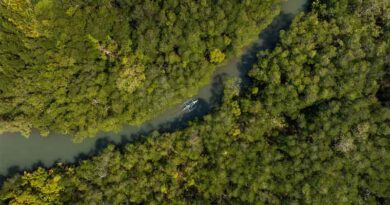
COP30: Landmark Report Finds Countries’ Climate Agrifood Ambitions Undermined By Funding Gaps
19 November 2025, Brazil: Developing countries recognize the urgent need to adapt agrifood systems to climate change, but most National Adaptation Plans (NAPs) are struggling to address key risks or protect vulnerable groups due to severe financing and capacity gaps, according to a landmark report released on Tuesday by the Food and Agriculture Organization of the United Nations (FAO) and the United Nations Development Programme (UNDP).
The report, titled Agrifood Systems in National Adaptation Plans, An analysis, was published during the 2025 United Nations Climate Change Conference (COP30) in Belém, Brazil. It is the first comprehensive study of its kind to examine the agrifood component of National Adaptation Plans (NAPs) – key frameworks that help countries, especially least developed nations, reduce climate vulnerability and integrate adaptation across sectors and communities. NAPs also play a vital role in mobilizing finance for national priorities.
Based on original analysis by FAO and UNDP of NAPs in 64 developing countries, the report closes critical knowledge gaps on how agrifood systems are addressed in climate strategies, examining risks, priority actions, financing needs, implementation barriers, monitoring, gender equality, and loss and damage.
The report finds that agrifood systems are universal priorities in the NAPs, with countries making concerted efforts to prioritize adaptation actions across the main agricultural subsectors (crops, livestock, forestry, fisheries and aquaculture). However, gaps and barriers in terms of turning the plans into concrete action remain. The report finds that agrifood systems account for more than half of adaptation finance needs in developing countries, yet receive only 20 percent of global adaptation funding – or just 1 percent of total climate finance.
“This analysis sends a clear message: countries know agrifood systems are the first line of defense against climate extremes, but they’re still not getting the support they need. The groundwork is there; now we need to close the finance and capacity gaps to turn those plans into real protection for food security and livelihoods,” said Kaveh Zahedi, Director of FAO’s Office of Climate Change, Biodiversity and Environment.
Key findings
- Agrifood systems are a top priority in all developing countries’ NAPs, with 97 percent reporting climate-related impacts on crops, livestock, forests, fisheries, aquaculture, value chains, and food security.
- Adaptation actions don’t match the risks: Only 16 percent of agrifood adaptation measures directly address those climate impacts, and just 14 percent target the needs of vulnerable populations, such as women, Indigenous Peoples, youth, smallholder farmers and others.
- Evidence-based planning for agrifood system priorities remains limited: Only one-third of NAPs use climate risk and vulnerability assessments, and fewer than half apply robust adaptation appraisal and prioritization methods.
- Implementation faces persistent barriers: Nearly half of countries report limited technical capacity, weak coordination, insufficient finance, and difficulties engaging the private sector.
- Finance falls short: While agrifood systems require 54 percent of adaptation finance overall, they receive only 20 percent of adaptation funds.
- Loss and damage are already evident: Nearly half of NAPs report losses and damage in agrifood systems – more frequently than any other sector – highlighting the limits to adaptation.
FAO’s role
FAO helps countries develop and implement NAPs by providing technical expertise to monitor climate adaptation, analyze scenarios, assess risks, and integrate adaptation into local development. Through its projects and programmes, FAO mobilizes finance, strengthens early warning systems, promotes resilient agrifood systems, restores forests, and protects fisheries and marine ecosystems.
Since 2020, FAO and UNDP, through the SCALA initiative, have supported more than 20 countries across Africa, Asia and the Pacific, and Latin America and the Caribbean. In Uganda, SCALA has supported the local implementation of the country’s NAP for agriculture using climate models, geospatial data, household surveys, and multistakeholder consultations. In Egypt, SCALA is supporting the design and roll-out of adaptation indicators and a monitoring framework as part of the country’s NAP. In Colombia, SCALA has supported the government to translate the NAP into localized vulnerability assessments tailored to enhance the country’s diverse agroecosystems.
At the local level, FAO helps rural communities – especially women farmers – adopt climate-resilient agricultural practices and strengthen livelihoods and nutrition.
FAO remains committed to helping countries formulate and implement NAPs and unlock the untapped potential of agrifood systems for ambitious, inclusive, and accelerated climate action.
📢 If You’re in Agriculture, Make Sure the Right People Hear Your Story.
From product launches to strategic announcements, Global Agriculture offers unmatched visibility across international agri-business markets. Connect with us at pr@global-agriculture.com to explore editorial and advertising opportunities that reach the right audience, worldwide.






